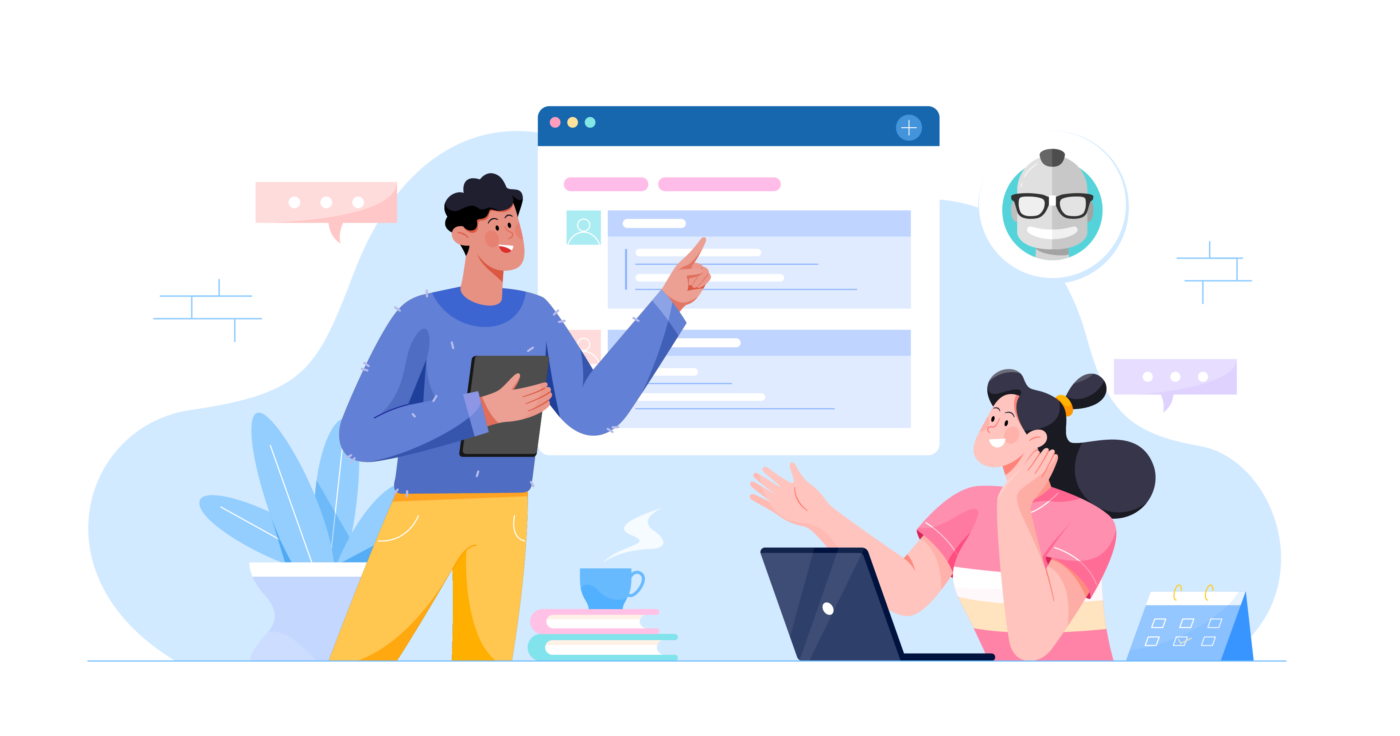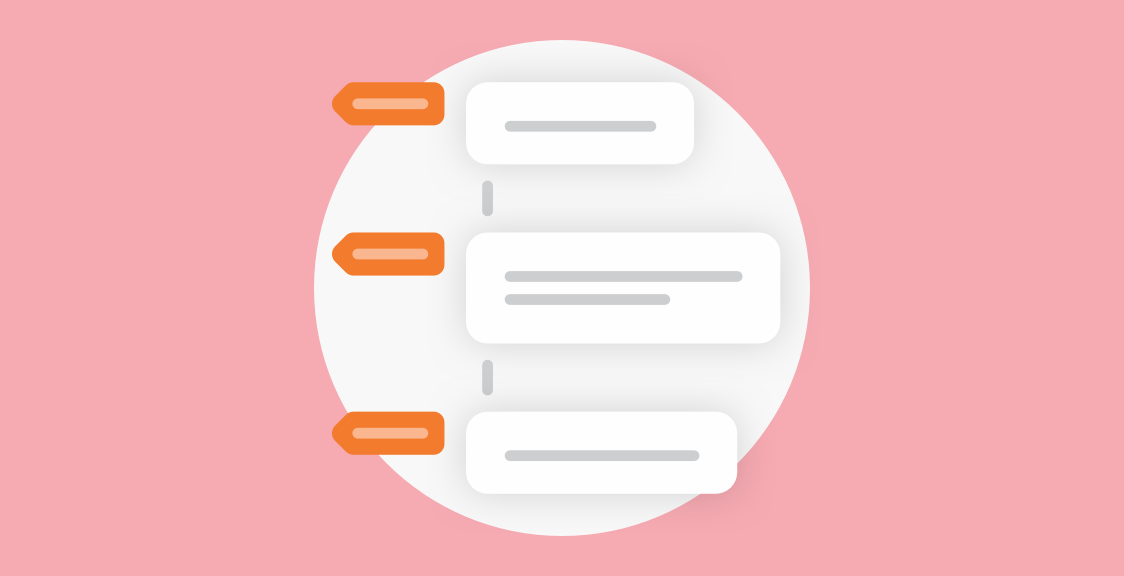Don’t you just hate compulsory meetings where the same, non-value-added themes are discussed time and again, wasting everyone’s valuable time and attention?
A clear meeting agenda solves many problems, but coming up with a clear meeting agenda is a challenge on its own.
For example, the meeting agenda isn’t effective when it’s only drafted by the team leader, who then imposes a monologue during the meeting (boring the life out of everyone while keeping them out of work).
Enter the meeting agenda template—a collaborative process that involves all the relevant team members in creating the meeting agenda. Now you can ensure meetings are relevant, to the point, and productive.
Here’s what to know.
What’s A Meeting Agenda Template?
A meeting agenda template is used for collecting information prior to the creation of the final meeting agenda. By creating a simple form that allows all team members to contribute information, the team leader can make the meeting process collaborative so that everyone knows what to expect of the meeting agenda.
The meeting agenda template gives all team members an opportunity to:
- Add their topics for discussion
- Answer and resolve minor topics (which can then be removed from the final meeting agenda)
- Receive valuable documentation beforehand (as attachments to the agenda template), which makes discussion much easier and quicker
Why Would You Use a Meeting Agenda Template
While a meeting agenda is a list of topics that are discussed with little opportunity for new insights or additions, a meeting agenda template is a document where team members can collaborate and contribute relevant topics to add to the meeting agenda.
The world of work has evolved, and dinosaur-age meetings where a tyrannical boss drones on about irrelevant topics should change to be more productive. Using a meeting agenda template helps filter through discussion topics, questions, and information points without wasting time at the actual meeting. The whole team can be included in the process of creating an agenda before the meeting.
Setting the agenda is no longer just up to the boss or team leader. Real value comes from collaboration with the team and elimination of unnecessary or repetitive discussions. After all, nobody goes to work (or logs in) with a feeling of “Yippee, another meeting!”
Use a meeting agenda template to streamline and optimize meetings so these become productive and less obtrusive to your staff’s workday.
Benefits of Using a Meeting Agenda Template
Using a meeting agenda helps to:
- Identify what should be discussed and who to include in the meeting.
- Share the questions before the meeting, add new questions you didn’t think of (by the team), and share feedback in one seamless process.
- Clarify what is expected of the meeting, defining the meeting purpose.
- Prevent rediscussing previous topics, while giving each team member the opportunity to contribute.
- Involve introverted team members without pressure.
- Boost team morale by reducing the number of time-wasting meetings that lack a clear purpose.
Why Use a Standardized Meeting Agenda Template?
It makes sense that using a standardized meeting agenda template ensures all the team members know what to complete on the agenda template and how this information will be used. When meeting agendas are free-form, it creates confusion and team members may not know what’s expected of them or how they can contribute.
Standardized meeting agenda templates offer convenience, structure, and guidance on how to create a meeting agenda that’s efficient and user-friendly. With a meeting agenda template, the objectives and goals of the meeting are set before the meeting starts
Since you know what the meeting will tackle, you also know which team members to invite to the meeting. As a result, all the invited team members are being involved in creating the agenda, turning the agenda from a document that’s imposed on the team into a valuable addition. Let’s look at an example meeting agenda template.
Meeting Agenda Template

A meeting agenda template is an organizational tool to help all team members contribute by adding topics for discussion before the meeting, which eliminates repetitive discussions and avoids time wasting.
How to Use Meeting Agenda Template
You’re gearing up for your next meeting and using the meeting agenda template for the first time. Here’s what to do and how to use the template for maximum effectiveness.
As team leader, complete the information section at the top of the template, filling in the date, topic or purpose, and meeting format. Next, add any discussion points you feel are relevant, also using this information decide which team members you need to invite to the meeting to answer questions or give feedback.
Now start sending the meeting agenda template to the team members, giving each the opportunity to present data or information that can be refined before the meeting while also adding new topics to discuss or get clarity on. Each team member indicates their discussion point with a few comments to clarify what is to be discussed.
Also add a list of new information pieces that need to be shared with the team such as upgrades or rollouts.
Finally, once all the invited team members have contributed, collect their responses, and formulate a comprehensive agenda that doesn’t include issues already addressed. Decide whether the meeting is going to take place in-person, online, or asynchronously.
You’re now ready to host or launch your formalized meeting agenda for a productive and time-effective meeting.
For even better use of resources, why not integrate the meeting agenda template into your current project management or CMS software such as Slack or MS Teams? What’s more, customize your meeting agenda template for the type of meeting you require, such as brainstorming sessions, client updates, project updates or handovers, and training.
For training or project meetings, your meeting agenda template may require more information on project codes and specific outcomes such as skills required. When making changes to your meeting agenda template, it is essential to keep in mind your template must be as lean and efficient as possible for sharing and collecting the most knowledge and information.
When using a meeting agenda template, there are a few things a team shouldn’t do with the agenda template. Never use a meeting agenda template as a generic document that doesn’t show flexibility and adaptability to gather more relevant information and feedback.
The meeting agenda template isn’t there to give the team leader a soap box to stand on, and it’s not there for a staff member to try and be popular or catch shine. When the meeting agenda template becomes a stale process or document that no longer has relevance, it is often a result of the meeting template becoming a chore nobody wants to commit to.
One way to ensure the meeting agenda template stays fresh, relevant, and productive is to automate the whole process.
How to Create a Meeting Agenda Automatically
To speed up the meeting preparation, the whole process to get the meeting agenda template to all the involved team members, collect their responses, and generate feedback can be automated.
Here’s how:
Simply log onto Geekbot.com, and add the free bot to your existing Slack or MS Teams workspace. After Geekbot is installed, enter its dashboard by messaging “dashboard” to the bot (from Slack or MS Teams). The Geekbot dashboard offers several options. To customize your template for meeting agendas, click on “Build your own.”
Enter the meeting descriptor. If your team uses an abbreviation such as Meeting Agenda Template (MAT), you can also add a brief descriptor.

Next, add the meeting participants.

Set your reminder schedule, which will create a schedule when the automated bot will remind team members to complete the meeting agenda template. With automated reminders, it becomes much less obtrusive to team members when they are reminded.

Once the schedule for reminders is set, you can choose your own reminder intro message, or you can use the automated message that the bot generates with each team member’s name.

Next, create the meeting questions that will help structure your meeting agenda template. Each question is entered individually, and the answer format can be preselected or customized.

After the first question, hover your cursor over the plus sign below the question to add more questions. These questions allow team members to add discussion points to the agenda template that will be used for your meeting.
You can also add your discussion points here to collect pre-meeting feedback. Remember to use one “plain text question” per topic.

Set your outro message, which can include a company announcement, information that each team member needs to know, or even a joke or motivational quote of the day.

Conclude by choosing your channel to publish to, and hit publish!

The automated bot will collect responses, remind team members, and deliver all the information and responses to the indicated Slack channel. Using automation, meeting time can be cut down, productivity optimized, and everyone can breathe a collective sigh of relief that they’ve avoided another boring and meaningless meeting.
Frequently asked questions
What makes a good meeting agenda?
A good agenda should keep the team updated about what is to be discussed, collect information that may influence future decisions, and help the team familiarize themselves with the content of the meeting if the meeting is conducted online or in person, or help them answer if the meeting is asynchronous.
What are the 5Ps in meetings?
Ensure the meeting agenda and meeting is purposeful (don’t have a meeting just because you feel like it) and productive (by having good meeting preparation in place with your automated questions), has a clear process (everyone should know how to complete the meeting agenda template), encourages participation (use automated reminders), and helps progress (the meeting should lead to improvement for the team).
How long should an agenda be?
Meernig agenda should be short and to the point, with an average of five topics or questions for discussion to avoid meetings becoming long and unproductive.



